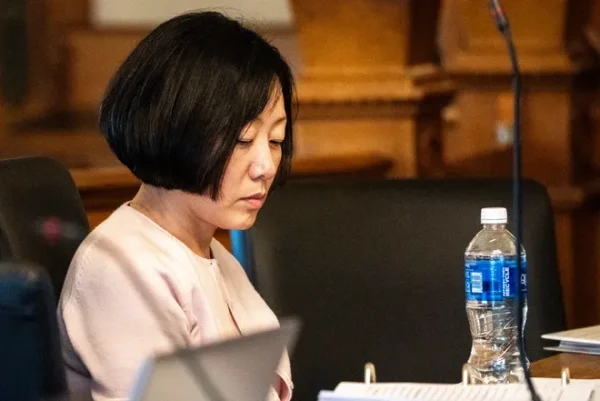Diversity: great necessity
October 10, 2002
Simpson is a very respectable college with highly educated faculty, great facilities and friendly staff. The benefit of such a small campus is better contact with the faculty. A negative factor of a small college that students often overlook is lack of diversity. Has anyone noticed while walking around campus or going to classes that the student body does not resemble the world outside college?
The campus might resemble many students’ hometowns if they came from a small town, but most students will not get a job in their hometowns after graduation. They will go to a city like Des Moines, which is diverse compared to their hometowns. Students will need to understand a little more about different cultures before they get a job that requires them to work with minorities.
The United States has always been a land of immigrants. It will continue to diversify in the future. Does your experience as a Simpson student train you to confront this task of working with people from different cultures? Being aware of other cultures not only prevents discrimination, it prevents hard feelings from creating a wall between people who have good intentions but fail to understand each other. Lack of knowledge leads to fear, and the fear is what causes avoidance and mistrust. How can people work with each other if they mistrust each other? How can Simpson provide an atmosphere where students have no fear of approaching other minorities?
Simpson is a liberal arts college and the goal of a liberal arts school is to not only train the student for his or her future careers, but also to aid in the self improvement of each student. That is what the cornerstones were created for. Are you confident that the cornerstones are enough to enable you to communicate well with people from other cultures? If Simpson does not provide an atmosphere in which students can freely explore and talk about differences in people, then it has not done its job as a liberal arts college.
In Simpson’s mission statement, one of the points is “nurturing those values which foster personal worth and individuality within a creative, diverse and just community.” Is Simpson a diverse community? Hardly so. What is Simpson doing to increase diversity? So far, the only thing administration has done is talked about the possibilities of Simpson being more diverse.
Over the years, Simpson has created many taskforces to deal with increasing diversity. The first two taskforces were created in 1990 and 1995-96. The most recent taskforce appointed was last school year. All these taskforces set good goals for the college to achieve, but not much has shown for all their work. In fact, the first two taskforce reports simply “disappeared.” Concerned Multicultural Students, a club in which Simpson students voice their concern for diversity, has a copy of the latest taskforce report. They will make sure that this report does not “disappear”.
In January of 1996, a team of evaluators from the North Central Association of Colleges and Schools, of which Simpson is a member, came to Simpson and pointed out in their evaluation that Simpson needed to allocate more resources to improving diversity. That visit was almost seven years ago. The most recent taskforce gave the college a timeline of five years to achieve its goals. The administration needs to take specific action soon because the time and energy of the taskforce members has been wasted enough setting goals and not seeing results. Simpson cannot afford to dabble with this idea of diversity any longer. If Simpson has stated that diversity is a high priority on its list of improvements, then it must back up its claim.
If the institution cannot carry out any major changes, the least it could do is make small changes such as having more forum events centered on diversity issues. One easy change is including a diversity statement on the Web site. Simpson’s Web site does not even hint that diversity is one of its priorities. This is a shame because the Web site should be one of the best marketing tools for bringing in prospective minority students. Why are minority students not depicted in the television spots that Simpson buys?
The administration has all the resources to create a campaign for more diversity. Lack of money is an issue, but it should not be used as an excuse for inaction. The students need to know that they are missing a critical component of higher education in their Simpson experience, and they should demand action from the college to fix this area. Again, Simpson is one of the top liberal arts colleges in the Midwest, but it can only go so far with this lack of diversity.
CMS
Contributed by Gary Huynh,
President of CMS












